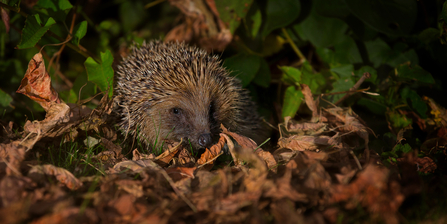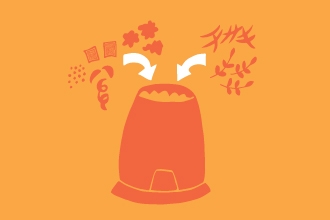Bonfires are very attractive to hedgehogs as woodpiles are ideal places for shelter and those still searching for winter hibernation.
Bonfire night – spare a thought for hibernating wildlife!

Hedgehog © Jon Hawkins - Surrey Hills Photography
There are several things you can do to keep hedgehogs safe and away from the pyre; build your bonfire on the day you light it and put chicken wire around the bottom when doing so, always build your bonfire on open ground and not on a pile of leaves, and check your bonfire for hedgehogs before lighting it by lifting each section with a pole or broom.
If you do find a hedgehog it’s important to move slowly and calmly. Pick it up with gardening gloves, along with any nesting material it may have been sitting in, and place it in a cardboard box lined with newspaper. Relocate the box to a safe location that is far from any fires or wait until the bonfire is over. Dampen down the fire site with water before releasing the hedgehog under a nearby bush or a log pile.
(c) Gillian Day
Our wildlife needs your help as the nights draw in and the chill settles - here are some top tips for helping your garden visitors have a safe and successful hibernation:
- Let the grass grow
Longer, thicker grass is the perfect hiding place for caterpillars and other insects, and on milder days caterpillars may even emerge to eat the grass. - Start a compost heap
A mound of warm, damp plant matter is an irresistible draw for all manner of wildlife, from insects and smooth newts to hedgehogs. If you haven’t got one and have the space, start one with fallen leaves and by winter you’ll have a mini hibernation palace. - Stop your pond from freezing
Frogs (particularly males) overwinter at the bottom of ponds so they can be the first to mate in spring. Float a ball on the surface to stop your pond from freezing over and trapping them below simply. - Stock your bird feeder
Although there are plenty of berries about now, winter is the most important time of year to keep your bird feeder well-stocked as food will be scarce. Buy energy-rich suet products, peanuts and sunflower hearts to give visiting birds as much energy as possible to survive the colder nights. Don’t have a garden? Consider a window or wall-mounted feeder. - Build a shelter
Go to ywt.org.uk/actions for all manner of helpful guides on building your own wildlife shelter. From mini ponds to bat and bird boxes, you only need a few simple tools and materials to create the perfect hibernation getaway for your winter wildlife visitors.


